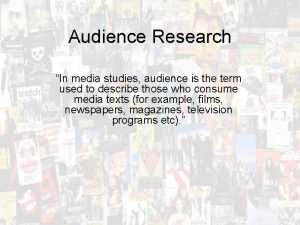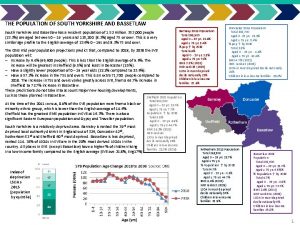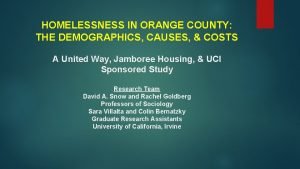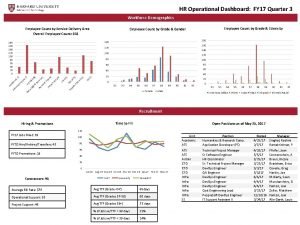CHAPTER 7 Demographics Psychographics and Personality Analyzing and













- Slides: 13

CHAPTER 7 Demographics, Psychographics, and Personality

Analyzing and Predicting Consumer Behavior Demographics is the size, structure, and distribution of a population

Analyzing and Predicting Consumer Behavior Marketers use demographic to analysis as market segment descriptors and trends

Demographic Analysis and Social Policy Demographic are used in analyzing policy questions related to the aggregate performance of marketing in society (macromarketing)

Changing Structure of Consumer Markets How many people will there be? birthrate fertility rate total fertility rate natural increase population momentum

Changing Structure of Consumer Markets Total fertility rate: average number of children that would be born alive to a woman during her lifetime if she were to pass through all of her childbearing years conforming to age-specific fertility rates of a given year

Changing Structure of Consumer Markets Population momentum: future growth of any population will be influenced by its present age distribution

Changing Structure of Consumer Markets Factors affecting birthrates: Age distribution of population Family structure Social attitudes toward family/children Technology Increasing life expectancy Immigration represents about 30% of annual growth in United States

Changing U. S. Age Distribution 1. Changes in age distribution affects the types of products and services that will be bought and consumed in the future 2. Cohort analysis is fundamental to understanding changing consumer markets 3. A cohort is any group of individuals linked as a group in some way

Children As Consumers Most parents do most of the buying Children often involved in family purchasing decisions Children often have their own ability to buy

Generation X (Young Adults) Segment of 25 -to-34 year olds is declining but will have a slight increase with the inclusion of older Gen Y consumers Need to buy products to set up households and for young children With many needs and greater financial restraints, they often shop at value-oriented retailers

Young Again Market Cognitive age: the age one perceives one’s self to be Cognitive age is measured in terms of how people feel and act, express interests, and perceive their looks Can be used with chronologic age to better target segments, create more effective content, and select the most efficient media channels

Conference: Consumer Behavior Roger D. Blackwell Paul W. Miniard James F. Engel Permissions Department, Thomson Business and Economics
 Swot analysis forever 21
Swot analysis forever 21 Audience psychographic research
Audience psychographic research Mainstreamers psychographics
Mainstreamers psychographics Demographics and the demand for higher education
Demographics and the demand for higher education Walmart shopper profile
Walmart shopper profile Academic advisor uf
Academic advisor uf Population of south yorkshire
Population of south yorkshire Sfa demographics
Sfa demographics Orange county demographics
Orange county demographics What was harvard named after
What was harvard named after Sfa demographics
Sfa demographics Demographic cohort
Demographic cohort Nhl swot analysis
Nhl swot analysis Hr operations dashboard
Hr operations dashboard

























